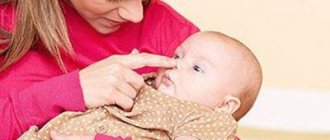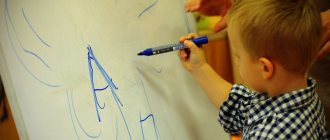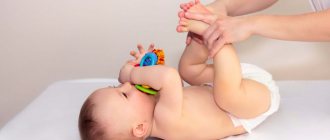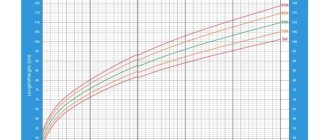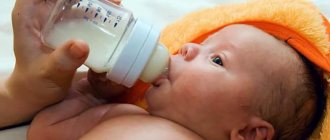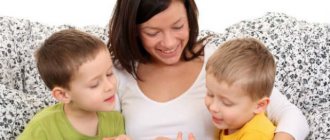It would seem that you just recently arrived with your baby from the maternity hospital. But today he celebrates his first birthday. Just yesterday he only wanted to eat and have his mother nearby. And today, from the huge number of impressions, this is not enough for him. At the age of one year, a child already understands a lot. And most importantly, he wants to tell all this, but doesn’t know how yet.
Therefore, it is simply necessary to develop the speech of a one-year-old child. After all, the sooner the baby learns to explain to you what he needs, and you understand him, the less capricious he will be. Your child’s whims and tantrums are directly related to the fact that he simply wants to be heard and understood by the people closest to him.
The speech development of a one-year-old child is quite active. After all, it is at this age that the child begins to actively explore the world around him. This means there is a desire to tell everyone about what he learns every day.
As a rule, the very first words have a direct bearing on the people who surround him every day. That is why the first thing a child says is mom or dad. Then words appear such as woman, uncle, if there are older children at seven, then nanny.
All this happens between the ages of 10 months and one and a half years. Also at this age, the child has a very strong desire to imitate others. He actively repeats people's facial expressions, gestures and, of course, sounds. The sounds that animals make are especially easy for him: the barking of a dog (aw-aw), the mooing of a cow (moo-moo), the meowing of a cat (meow), and the child also quickly remembers and repeats with pleasure, for example, how a car talks (bi- bi), clock (tick-tock).
It has been noticed that the first words a child utters are of a generalized nature. But this is not at all similar to the generalization to which we, adults, are accustomed. An adult, in order to combine several objects together, tries to find some specific direction in them, i.e. for example, what they are intended for. And the child simply remembers one specific sign and, subsequently, finding this sign in completely different things, calls them in one word. For example, yum-yum, for parents this can only mean one thing, the baby is hungry. But the child means by this not only the desire to eat, but also the dishes from which he was fed or even a stranger’s child, simply because he sees someone else’s baby chewing a bun.
One of the most common sounds that a baby makes at this age is “Y”. As a rule, this sound is accompanied by the baby pointing his fingers at some object. Very often parents get angry with their child because of this and try to explain to him that this should not be done. But it's not right. Psychologists believe that the pointing gesture is an undeveloped form of grasping movement. A child, due to his age, is simply not able to take this or that object that he wants. But he simply does not know how to explain his desire to his parents.
The sound “Y” is a child’s passive vocabulary during speech development. Those. this means that the baby perfectly understands and recognizes this or that object, but cannot say its name. As a rule, if parents do not try to wean their child from this gesture, but, on the contrary, try to understand what their baby wants to tell them and help him with this, the child’s passive vocabulary quickly increases. And this directly leads to the fact that soon it may well become active, i.e. Instead of “Y”, the child will begin to pronounce the words themselves.
An important condition that promotes the development of speech in a one-year-old child is the baby’s communication with adults. Having noticed your child’s interest in a new toy, thing or object, try to tell him as much as possible about it. If this is a toy, then first name it, then tell the child what it is (soft, hard, colored, etc.), what you can do with it, how you can play with it. Be sure to comment on all your actions. Try to do this not only at home, but also on the street.
In order for your baby to learn new words faster and better, it is very important that your stories are not just sound for him. If your child sees a tree, be sure to allow him to touch it. This way it will be more interesting for him and he will quickly remember that this large plant, rough to the touch, is the very tree that you told him about and showed him in the picture.
By the way, looking at and discussing pictures also plays an important role in the development of a child’s speech. At one year of age, the baby is already quite capable of comparing various objects and their images. For example, if you saw in the picture the same toy as your baby, for example, a teddy bear, start comparing this toy with the picture. Well, for example, “Masha has a bear and there is a bear in the picture. In the picture the bear is white, but Masha’s is brown.”
It is very important not only to name objects, but also to tell the child what actions can be performed with them. Ask your child to bring a book. With the help of this book you can teach your baby various actions. You can show it to a doll, put it on a shelf, close it, open it, look through it, and look at pictures in it. Make simple, basic requests to your child more often, without fear that he will not understand you. Bring your own mug. Take the plate with you, give mom a spoon, etc. The baby will be very interested in helping you, and most importantly, he will receive his first experience of communicating with the world around him.
Another way to develop a child’s speech is through all kinds of nursery rhymes and jokes. Thanks to a clear rhythm, they help the child remember and understand new words and actions much faster.
What should a 1 year old child say?
At the age of 12 months, the child already has basic abilities. He must understand adults and be able to fulfill verbal requests.
All children are different and you shouldn’t “sound the alarm” if the baby can’t do something. Perhaps we still need time. The vocabulary of a one-year-old baby includes from 2 to 10 words. Many children try to imitate with sounds, this is acceptable: me-me, ma-ma, ba-ba, di-di, mu-mu, am-am, etc.
